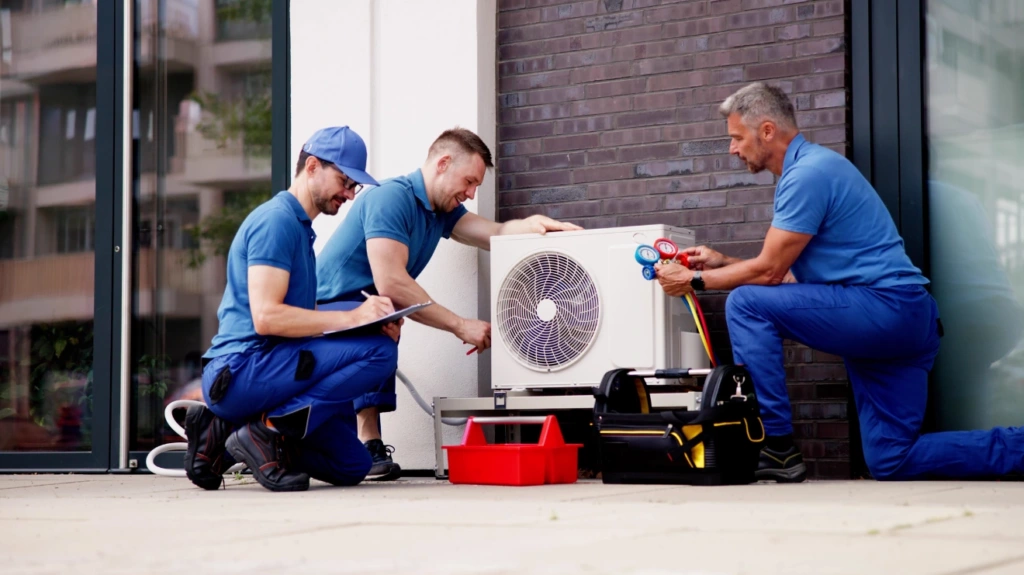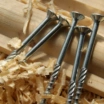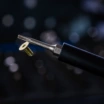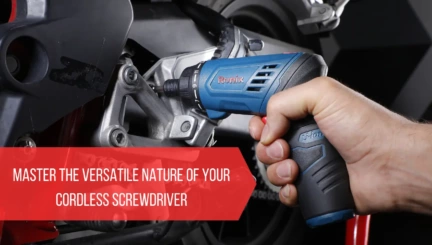- 10min
- 5189
- 0
This article might not be for you if you prefer opening a window or getting the shady side when you feel hot in summer. I am talking to those heat-sensitive people who find ACs necessary for surviving hot days! If you are like this, you may need a complete Ac Maintenance Checklist to always stay cool and never miss out on chilly breezes from a sound air conditioner.
There are many types of duct and ductless ACs in the market, but in this article, try to give you a general walkthrough, and keep it comprehensive. So, some stages will be true for all types while some may not be practical for other kinds.
So, take a look at your system and check what part of the process fits your unit. But before delving into the process I want to answer a frequent question.
Why Is Having an Air Conditioner Maintenance Checklist Important?
An AC maintenance checklist is essential if you have an AC or HVAC system at home or in your office. As they are complex, and made of many components, they can have issues you might not notice right away. So, without regular checks, you may face the risk of finding yourself melting on a hot summer day when your AC suddenly stops working.
You can also guarantee a longer lifespan and higher efficiency with regular check-ups for breakages and frictions and guess what happens later? You will spend less money for more peace of mind!
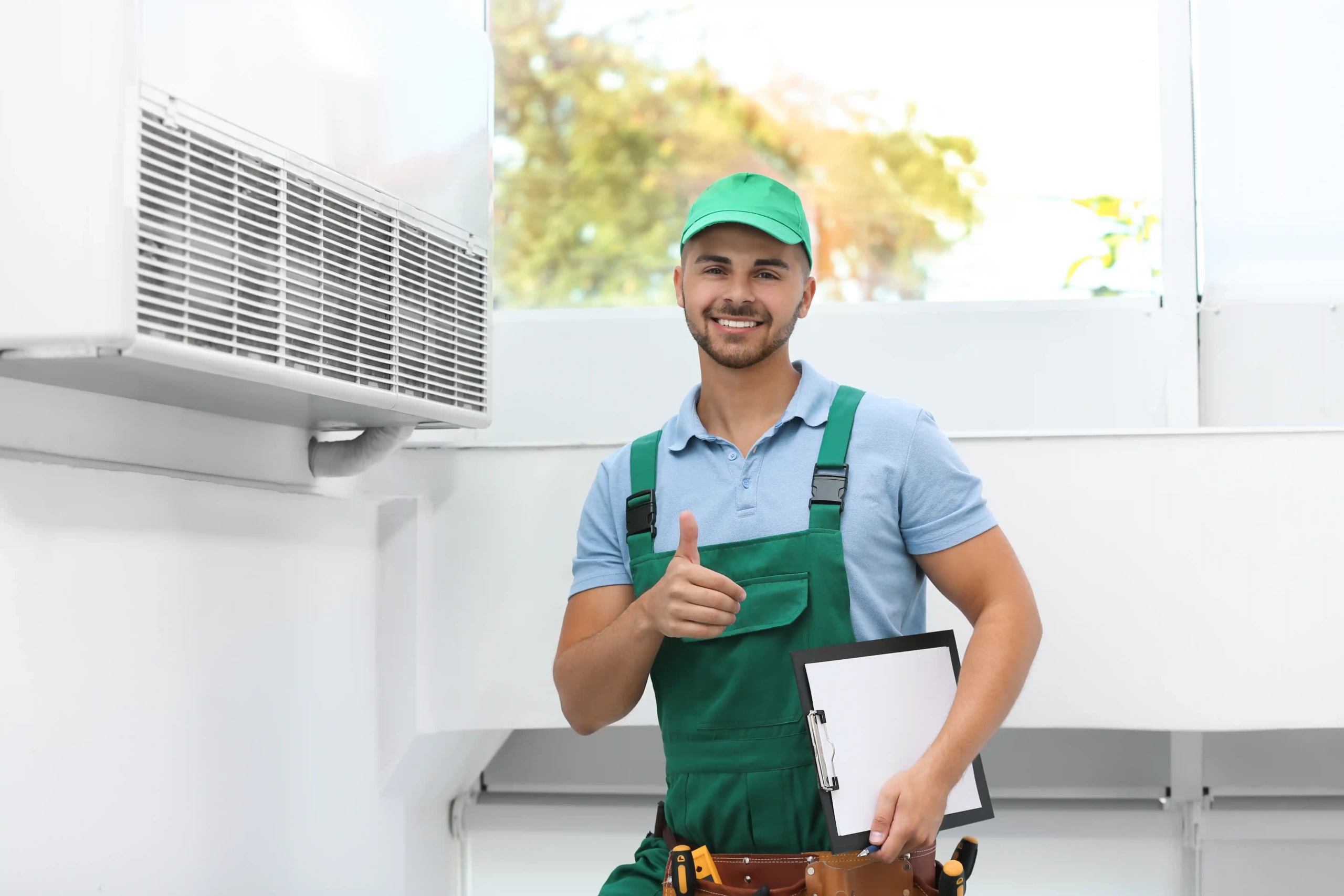
How Often Should You Maintain Your Air Conditioner?
At least once a year! But if you want an ideal check, don’t go less than two times a year.
Additionally, you should clean or replace filters every 1 to 3 months, based on how long you have used them and of course the type.
Alongside, you should check your AC whenever you hear a weird sound or your unit is not working as always does.
Seasonal Air Conditioning Maintenance
You might wonder when the best time is to pull the air conditioner maintenance checklist out of your pocket. The answer is before the high season.
You need to start your process before the hot days start. So, based on where you live you can do it from the middle to the end of spring. While, if you have an HVAC (Heat Ventilation Air Conditioner) and want to use it for heating on the cold days, the last days of summer to the first days of autumn will be ideal.
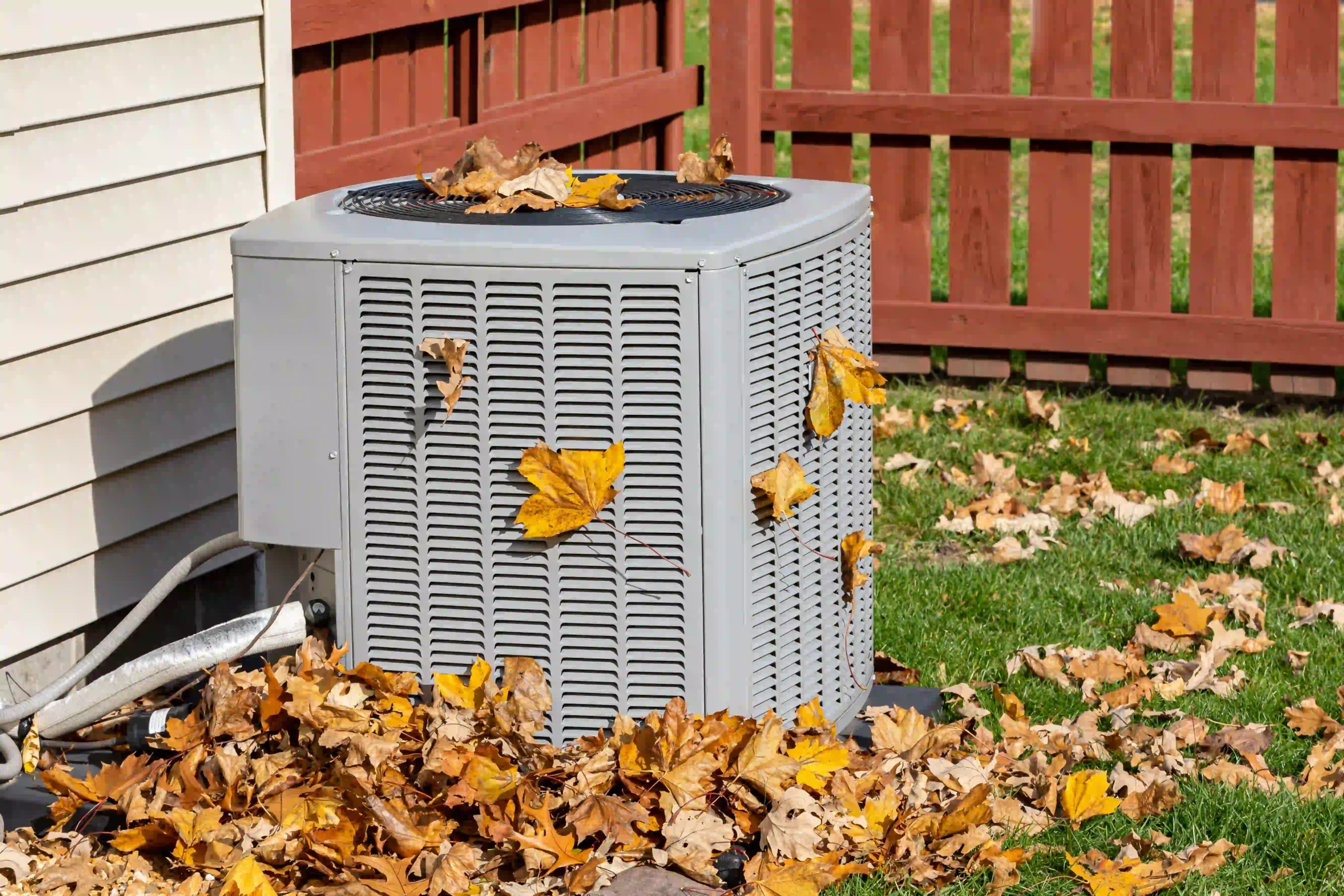
17 Tips to Add to Your Ac Maintenance Checklist
Here, I am going to offer you a walkthrough that contains 17 tips for maintaining your air conditioner. In this guide, I will tell you more about cleaning different parts of the AC unit, like the bottom, the filter, the condenser, the evaporator coil, etc., along with inspecting different components such as refrigerant lines and ducts. To learn more about the process, don’t hesitate to read the tips.
1. Clean the Bottom of The AC Unit
First, remove the lid or cover carefully with the proper tools. Then check if there is any filth on the pan, or the bottom of the unit. You may ask Why I should Check it. The answer is that some holes in the pan take the drain out of the unit. If they get too full, the drain will get stuck in the unit and cause trouble.
You can use a vacuum cleaner to get rid of the filth on the pan and then wash it with the garden hose.
2. Clean the Condenser and Its Fins
The fins are some fragile components in the ACs that you should be careful when cleaning them. While the AC is running, they move the hot air away, so the unit does not overheat. That’s why you should watch the fins regularly.
For cleaning them, you need a fin brush. Push the teeth among the fins and move them up and down. Then shed the light of a flashlight inside the unit and check if you can see the inside part. If it is not completely clean, you can detect it.
If the fins aren’t clean yet, you can use an AC condenser coil cleaning spray. Remember to wear rubber gloves and safety glasses due to the chemicals in the spray. Apply the foam from the inside out, then rinse it off with a water hose. Be careful not to use a pressure washer, as the fins are delicate and can easily bend.
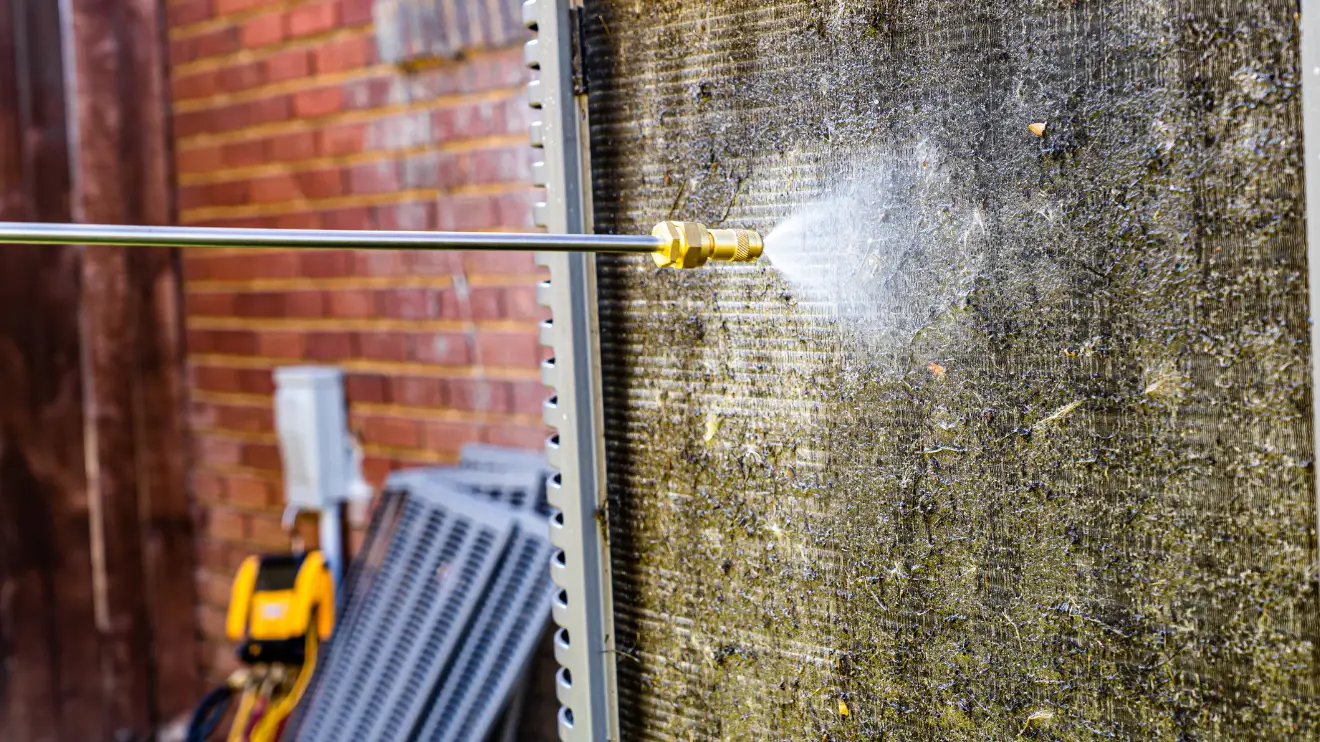
3. Remove Plants and Debris from Around the Condenser
After You make sure the fins are clean, check if there’s any debris stuck in the condenser coils. In case, you find debris, use a soft brush or a vacuum with a brush attachment to remove it. But don’t forget to do it gently, otherwise you may damage the coils.
4. Clean or Replace the Filter
Never forget to add it to your air conditioner maintenance checklist. Filters should be cleaned and replaced regularly because the dirt remaining on them will make them work more than usual and consequently get worn out soon. Gently take the filter out from the housing and check if there are any torn or worn parts on it. If it is damaged you should change it. But if it is washable and just filthy, you can simply rinse it with a gentle detergent, like a spray or soap.
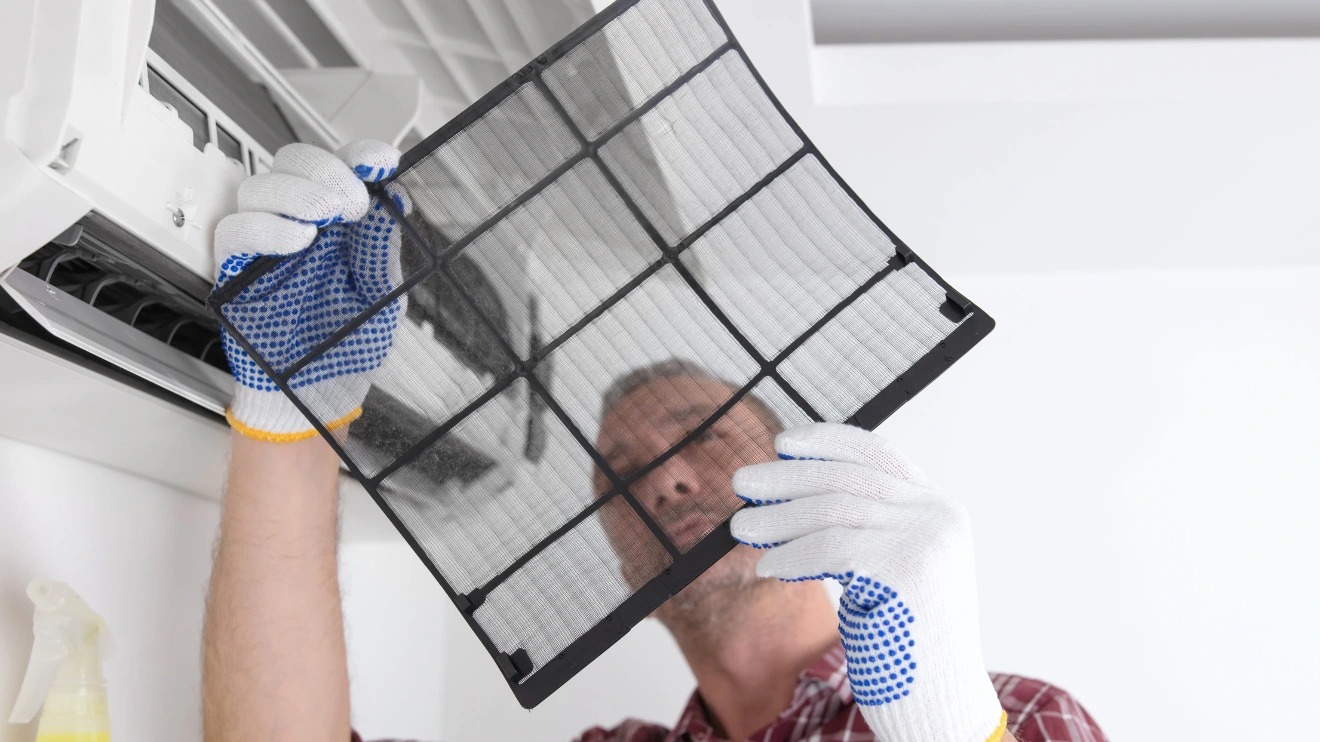
5. Inspect the Refrigerant Lines
Refrigerants are vital materials in split ACs. They circulate the unit via two copper lines (pipes) that are connected to the condenser box. And if the lines leak, the AC system can not remove heat. So, it is important to check the lines to detect seep.
You should check them visually and technically. For technical inspection, you need two gauges. They will show you the pressure and temperature. To work with them, you should first remove the gauge cover to see the scales better. Then inspect the outer blue ring for the PSI and the inner green and pink ring for the temperature.
Additionally, when inspecting your refrigerant lines, check if the pipes are sweating enough. The moisture on them will show that the refrigerant in the lines is cold enough.
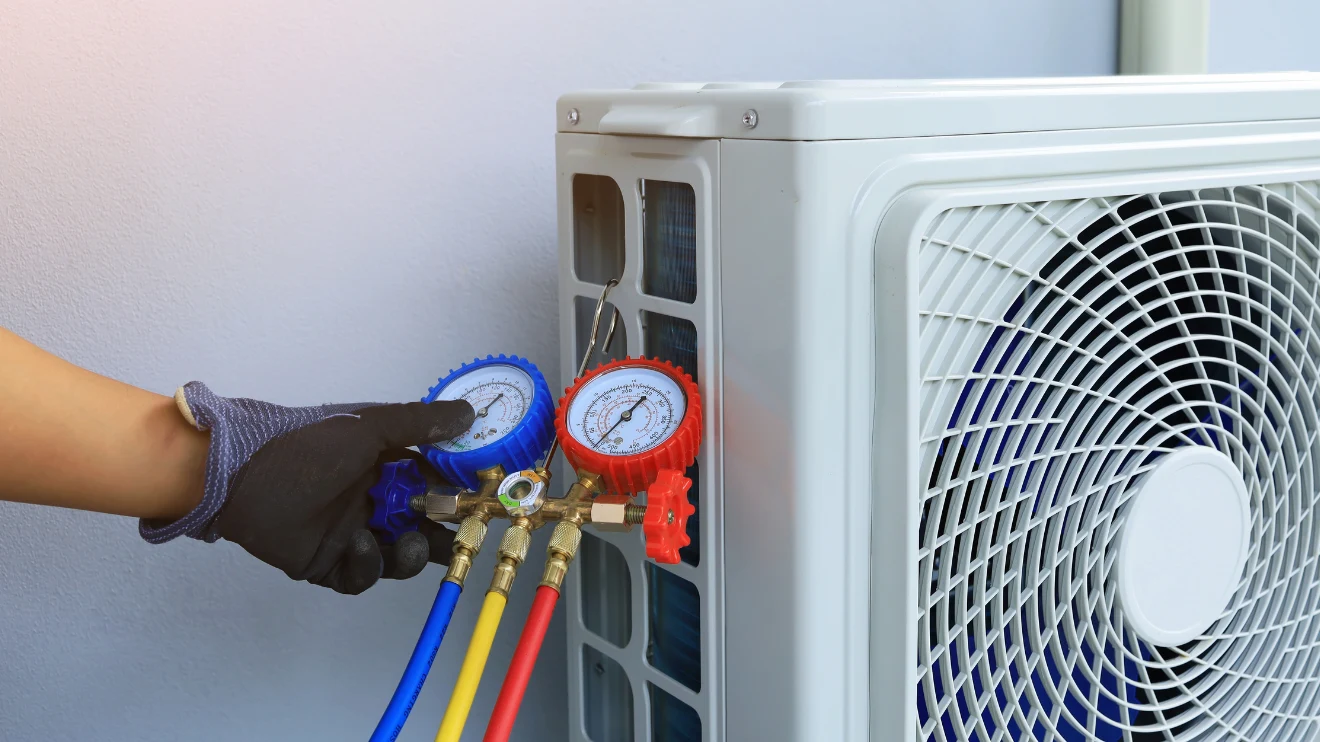
6. Clean Your Evaporator Coil
Evaporator coils are typically located near the AC vents on the ceiling or wall indoors. To access the coils, carefully remove the panel and filters. You can use a no-rinse coil cleaner to clean the coils, to help your AC run more efficiently and prevent it from overworking.
7. Inspect Cooling Coils for Frost or Ice Buildup
While sweating is normal for cooling coils, you should take ice buildups seriously. When it is working normally, when you touch the coil, it is cold but never freezes.
You can also detect the abnormality when the unit produces a hissing sound and you feel like warm air is coming out of the AC as well.
8. Inspect Ductwork for Leaks
For this stage, you need to turn your AC on and check where the ductwork is located. Check for loose connections and leaks. Consider the hissing sound as well. It may be because of a sign of bad connections.
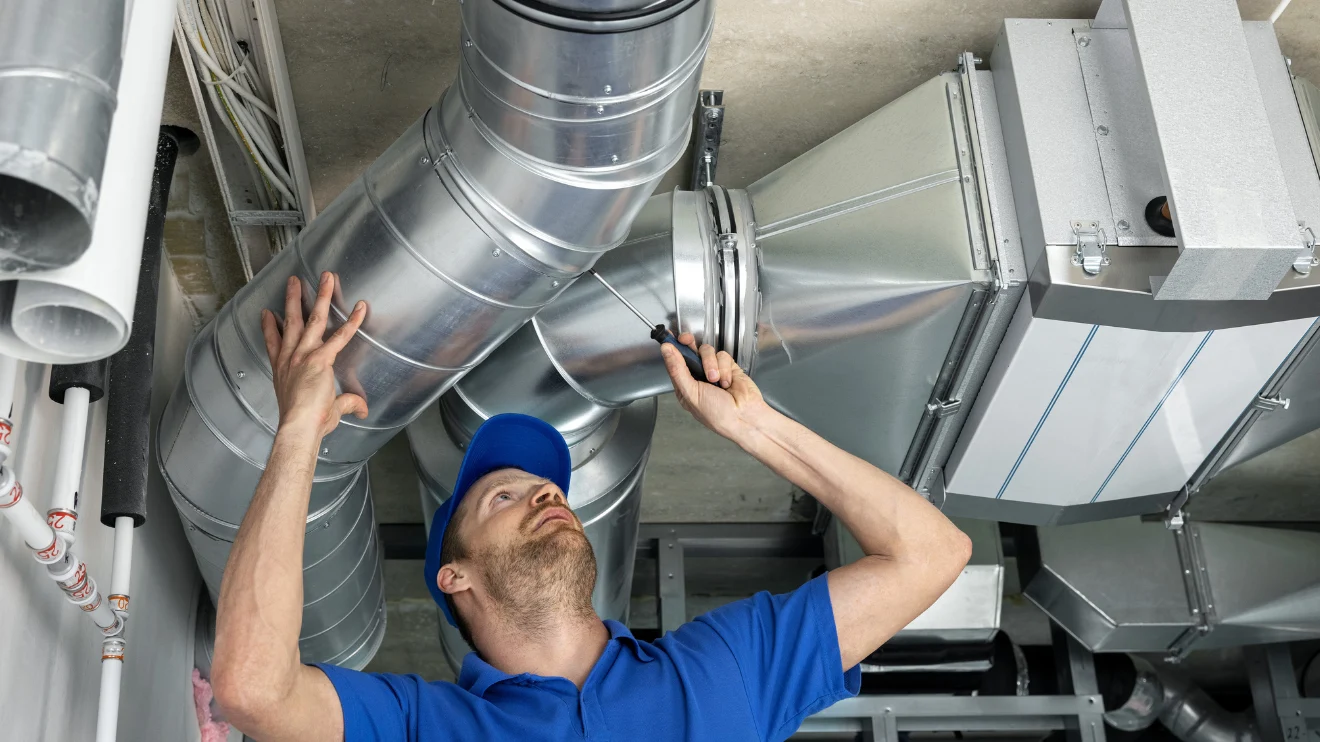
9. Visually Inspect Electrical Wiring
While you are sure the power is cut, check all the electrical wirings; see if there are any visible changes in them or check if they are damaged. Look precisely if you can find any cracks or dents. Aren’t there any wires broken? If so, ask a professional to help you, and preferably don’t engage in electrical work if you do not have enough skills. But if they are just loose and there is no damage on them, you can tighten them yourself.
10. Check the Thermostat
Split air conditioning systems usually use a thermostat to regulate temperature. If they don’t work well, the AC will face many problems from displaying a temperature that does not match the actual one to failing to turn on/off.
To examine it, first, make sure that the thermostat is on. If it works with batteries, change them with fresh ones.
Then observe the display and compare its number with the room’s temperature using a thermometer. If they are not close you should ask for professional help.
Afterward, you should cut the power and remove the cover to check the electrical wires. See if all connections are ok and there is no damage or dent on the wires.
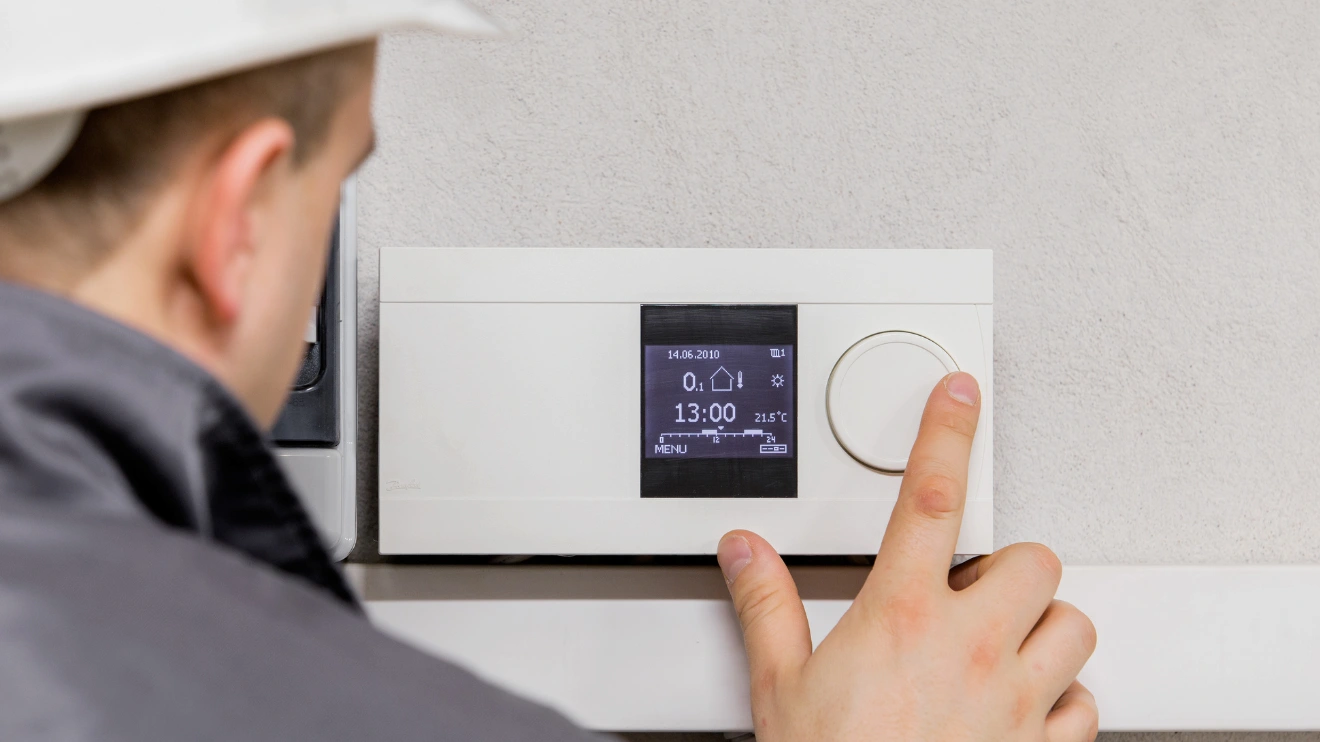
11. Check and Clear the Condensate Drain Line
To check and clean the line, you don’t need to go further than domestic tips and tricks. If you see the drain line, you may find out if it is filled with clog or not. But if it is not visible, put on gloves and remove it by hand. However, if the blockage is so stubborn that you cannot remove it, you can make a white vinegar and warm water solution to do so.
12. Lubricate All Moving Parts
Motor and fan bearings are the most important moving parts in your AC that require lubrication. For lubricating them you need non-detergent motor oil. Pour the oil on the specific ports or put it directly on the shaft and bearings. But pay attention you should not use too much of it, because it will cause build up and attract dust. And after lubrication, wipe off excessive oil.
13. Clean the Fan
Cleaning fans is not as difficult. If you have a garden hose you can simply remove the fan and wash it, but if you don’t, use a paper towel and some mild detergent.
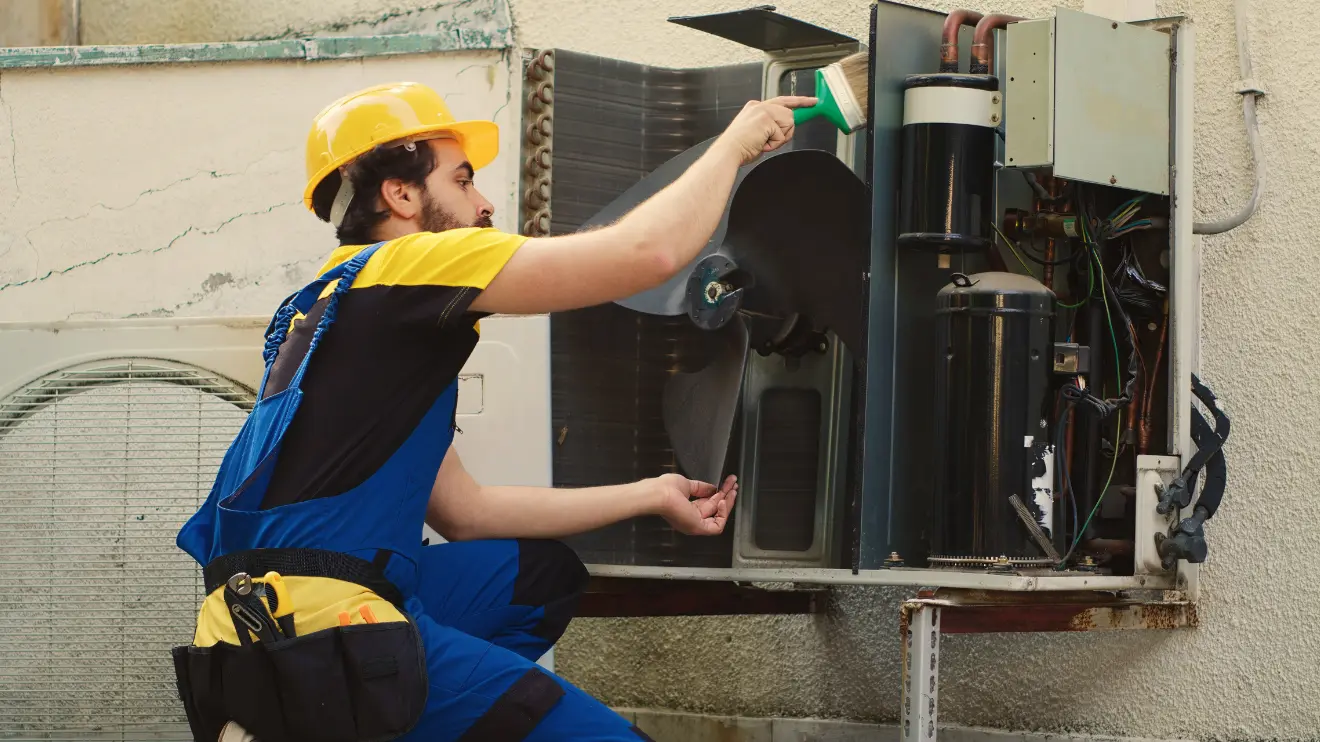
14. Address Potential Airflow Issues
When I see some specific signs, I usually suspect that the airflow has some problems: When the temperature is not the same throughout the building, and I feel hot in some spots while feeling cold in other places, or when simply I find that the air coming out of the unit is so weak or abnormally strong that makes doors and windows shut suddenly.
15. Keep Your AC Unit Level
If your AC unit is outdoors, you may have challenges leveling it on the ground. So, never forget to put it in your Ac Maintenance Checklist. You have some options. You can buy a pre-made concrete slab or make it yourself. The hand-made one can be fully customized, while the pre-made one is easier to install. So, if you want a more convenient solution you can use them.
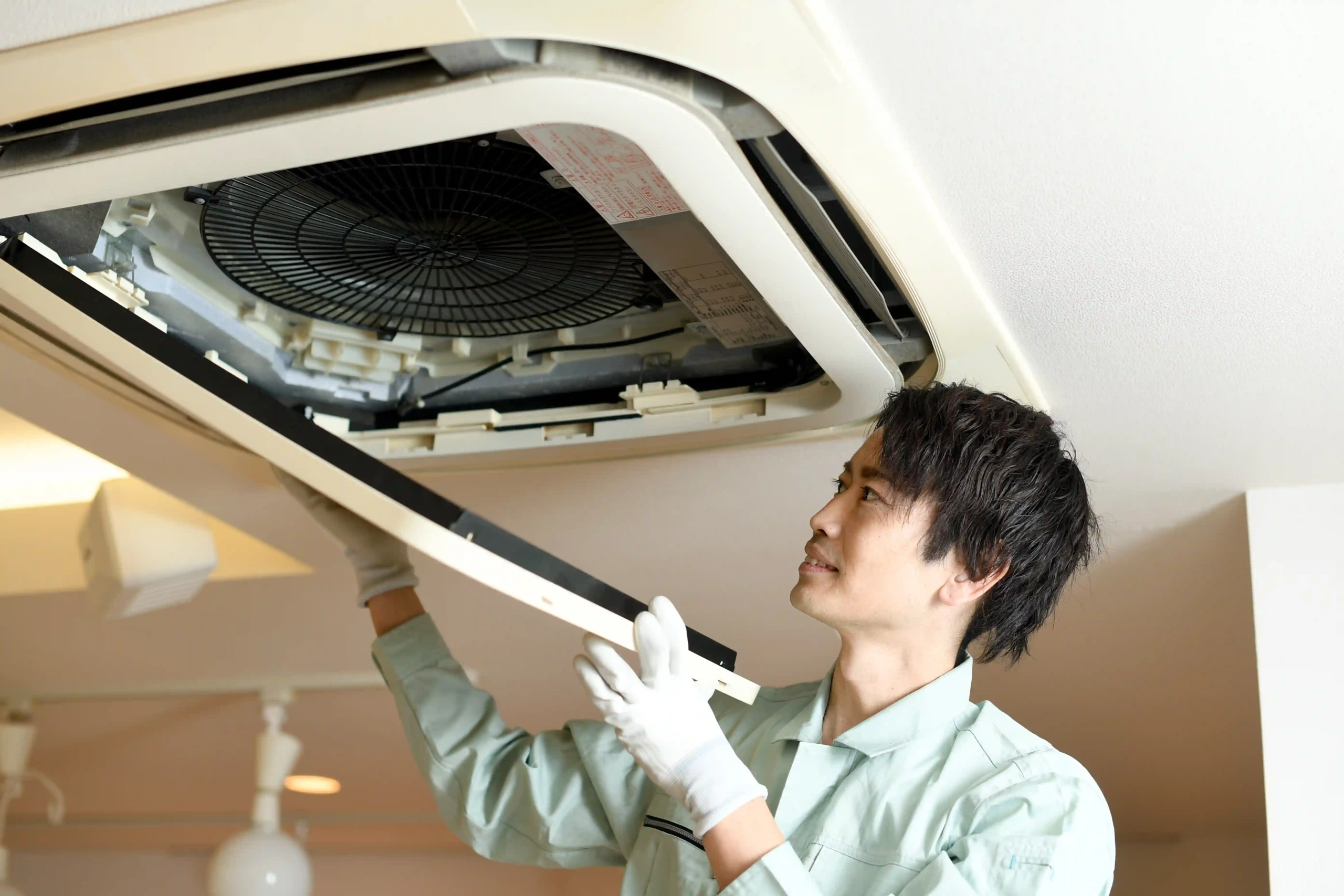
16. Monitor Operation and Run the Final Test on Your AC System
Along with all the items in this AC maintenance checklist, I usually pay attention to some other specific signs:
I check if the Air conditioner produces unusual noises. In case, I start inspecting the problem asp.
Then, I always pay attention to the humidity levels, if the air feels damp or the humidity is high, it can be a sign that the system isn’t functioning well.
But these are not the only things I check. If the energy bills increase suddenly, I go and look for problems with my electric appliances, including my air conditioner.
17. Schedule an Annual Tune-Up
The last step here is planning for the next maintenance process. Regular check is key to having a sound and durable AC. So, set a reminder on your next year/season calendar for next year’s tune-up.
FAQ
How often should I perform maintenance on my air conditioner?
At least once a year. But if you want ideal maintenance, do it twice a year. Once before the hot season and if you have an HVAC, once before the cold season.
What are the key parts to inspect during air conditioner maintenance?
You should nearly check all parts, but the main ones are the filter, fan, fins, Condensate parts, evaporate coils, motor, thermostat, and wiring set.

Ronix
14 September 2024
